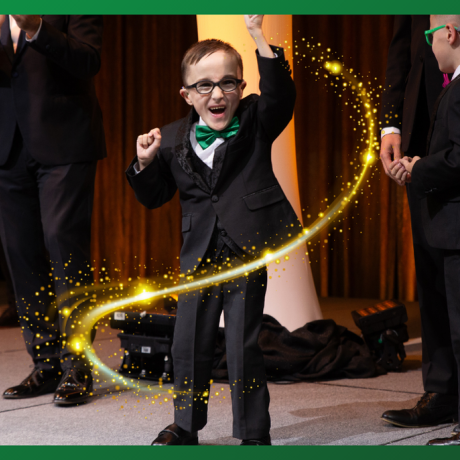Going into a hospital can be challenging for children, who may not fully understand what’s happening. And parents can experience a special kind of worry and anxiety. That’s why the medical profession of child-life specialist exists. Child-life specialists are trained in child development, family dynamics, bereavement and other related skills and serve as a bridge between clinicians and the family. They help the family understand what is happening and help the child to be comfortable with procedures and their overall hospital experience.
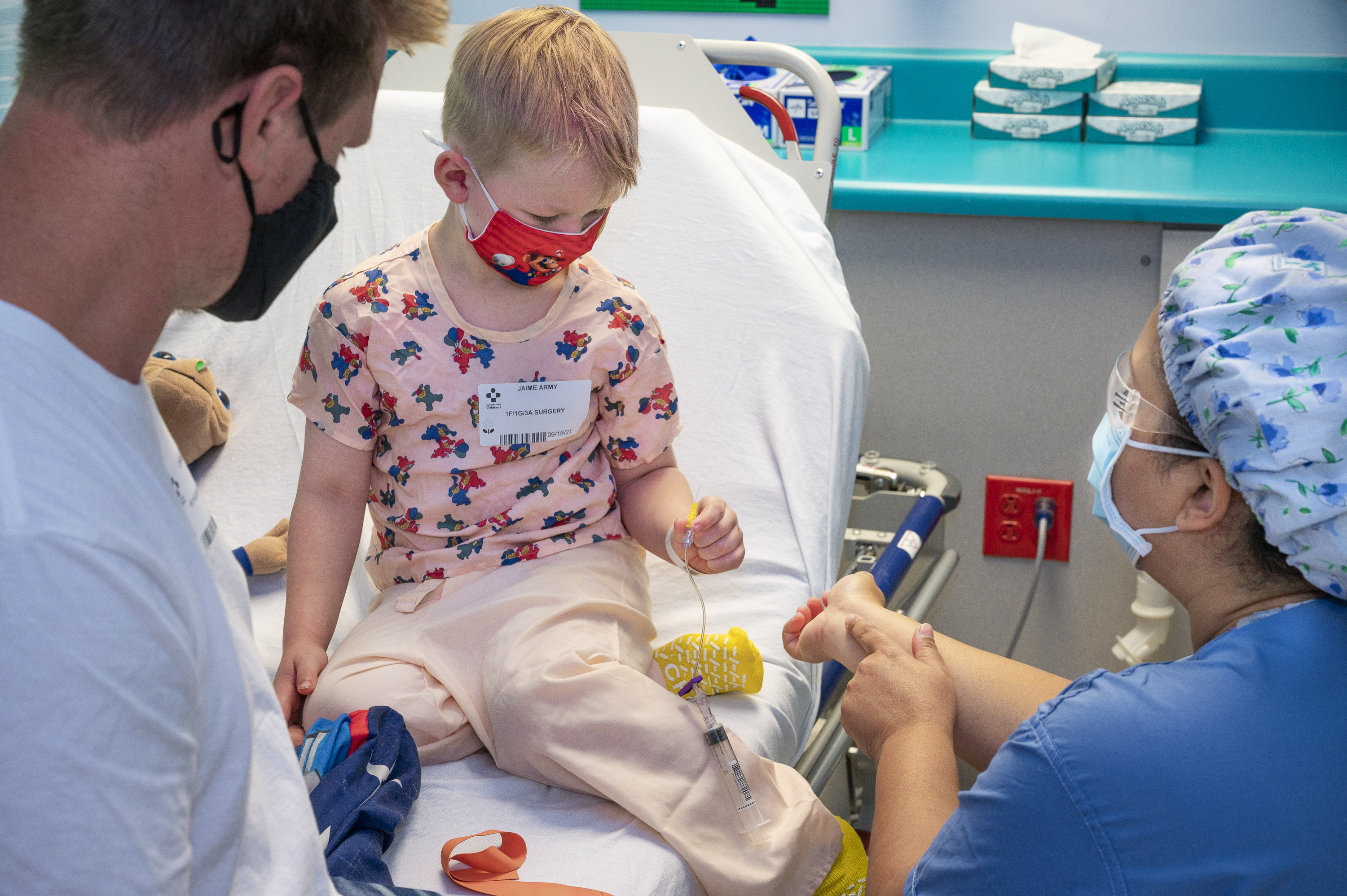
That may sound simple on the surface, but the range of skills a child-life specialist needs to master is remarkable. They need to understand medical procedures of all kinds and how to explain those procedures to a child—with a different version for various ages and cognitive abilities. They need to read an emotional situation instantly, even before it surfaces, and have an appropriate and effective solution ready to hand, which differs from child to child and family to family. They need to understand various cultures, not only in terms of what and what is not appropriate behaviorally, but also in terms of gender differences and attitudes toward medicine. They have to be able to choose just the right toy, organize a party, talk to an anesthesiologist about a procedure and console a mother whose daughter has just died. They have to be thoroughly adaptable, instantly creative, endlessly patient and entirely compassionate.
Many divisions of Connecticut Children’s have at least one child-life specialist attached to it. To give you a small sense of what these remarkable people do, we decided to spend a day with three of them.
8:00 a.m.
Sarah Malvezzi and JoAnn Fernandes are on duty this morning in the pre-operative section of the third floor. This is where children and their families come before their scheduled surgery. There are 12 bays, and most are occupied. In each bay, the child is in a bed and wearing a johnny, with a parent or parents sitting nearby. This morning, most of the patients are younger children, and each is in a different emotional state: some calm, some anxious and afraid, and others playful. Sarah and JoAnn start by looking at a chart showing when each patient’s surgery is scheduled. They work most intensely with the kids who are about to go into the operating room. Most of the cases today are relatively minor. The first child this morning is Jeremiah P, a three-year-old boy, and he seems fairly calm. Sarah is sitting on his bed and is showing him the anesthesia mask that will be put on his face in the operating room. The child-life specialists focus on keeping the child informed about what’s going to happen and use actual medical equipment to help with that. Sarah shows Jeremiah how the mask goes on, then has him put it on his own face. It gives the child a sense of control in a situation that might otherwise make him feel helpless.
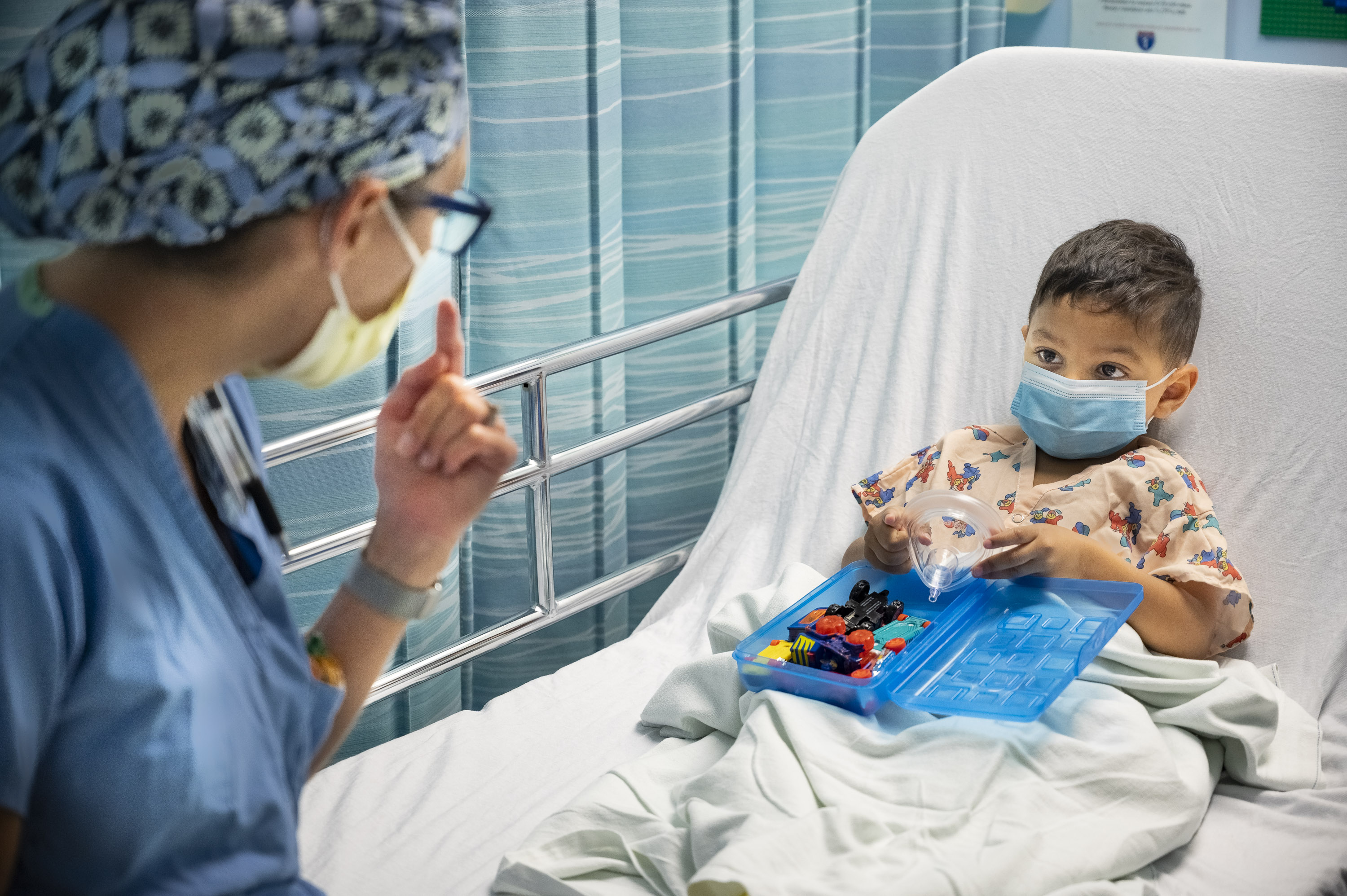
Then, Sarah helps his mother get into a gown and surgical cap, because she is going into the operating room with him, at least until he is unconscious. With each passing moment, Jeremiah is getting more and more nervous, perhaps sensing his mother’s anxiety. So Sarah has him drive himself down the hall to the operating room. The third floor has five child-sized electric vehicles, and Jeremiah chooses a Minnie Mouse car. Having a choice and driving himself to the operating room (with lots of help from Sarah) builds trust and gives Jeremiah more control. Once there, his mother picks him up and carries him to the operating table. Sitting on the table with his mother’s arms around him, Jeremiah is very anxious and fidgety. His mother is having a tough time seeing him so upset. But Sarah is speaking to him in a gentle voice and the surgical team easily slips the mask over his nose and mouth. Within a minute, Jeremiah starts to drift off, and the team gently eases him onto his back so they can begin the surgery. Sarah walks Jeremiah’s mom down to the waiting room, reassuring her the whole way about typical responses for kids his age.
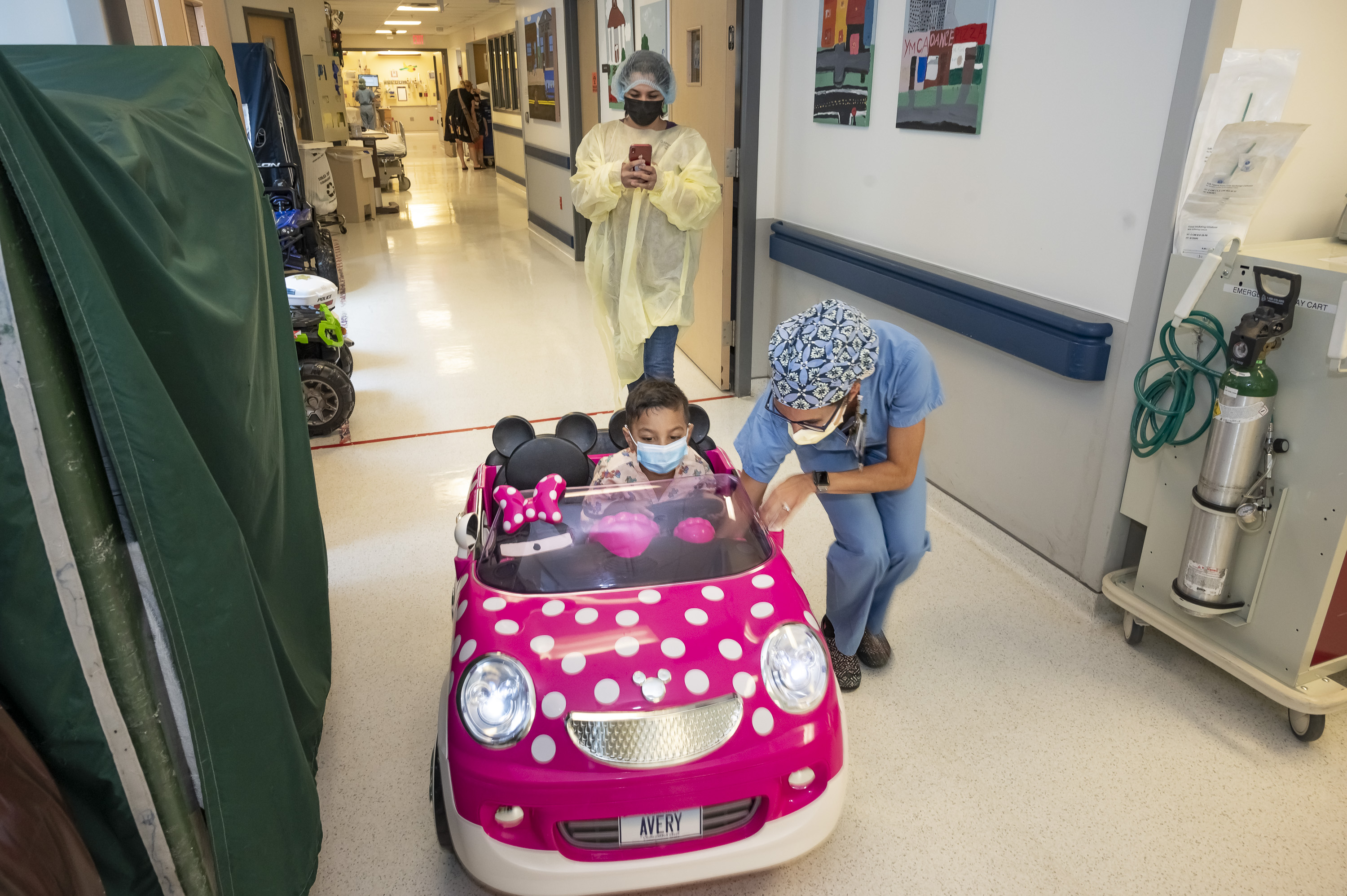
10:30 a.m.
The seventh floor of the hospital is one of the inpatient floors, and it is where Lauren Turcotte works. There are 28 rooms here, and all are full today. The kids represent a wide range of ages and conditions. Lauren has been setting up volunteer schedules, arranging arts and activities and is now reviewing medical records and being updated on each patient.
1:00 p.m.
A 9-year-old boy is here for asthma. He’s a lively, intelligent child, and his main problem right now is boredom. But Lauren has a solution for that. She fetches a mobile Xbox on a wheeled cart. She glides it into the boy’s room and sits with him while he chooses a game. There’s an issue, though, and Lauren has to go into the game’s settings to sort it out (child-life specialists have to be technical wizards along with everything else). As he’s getting his game going, Lauren asks lots of questions about his medical care to be sure he understands what’s going to happen next.
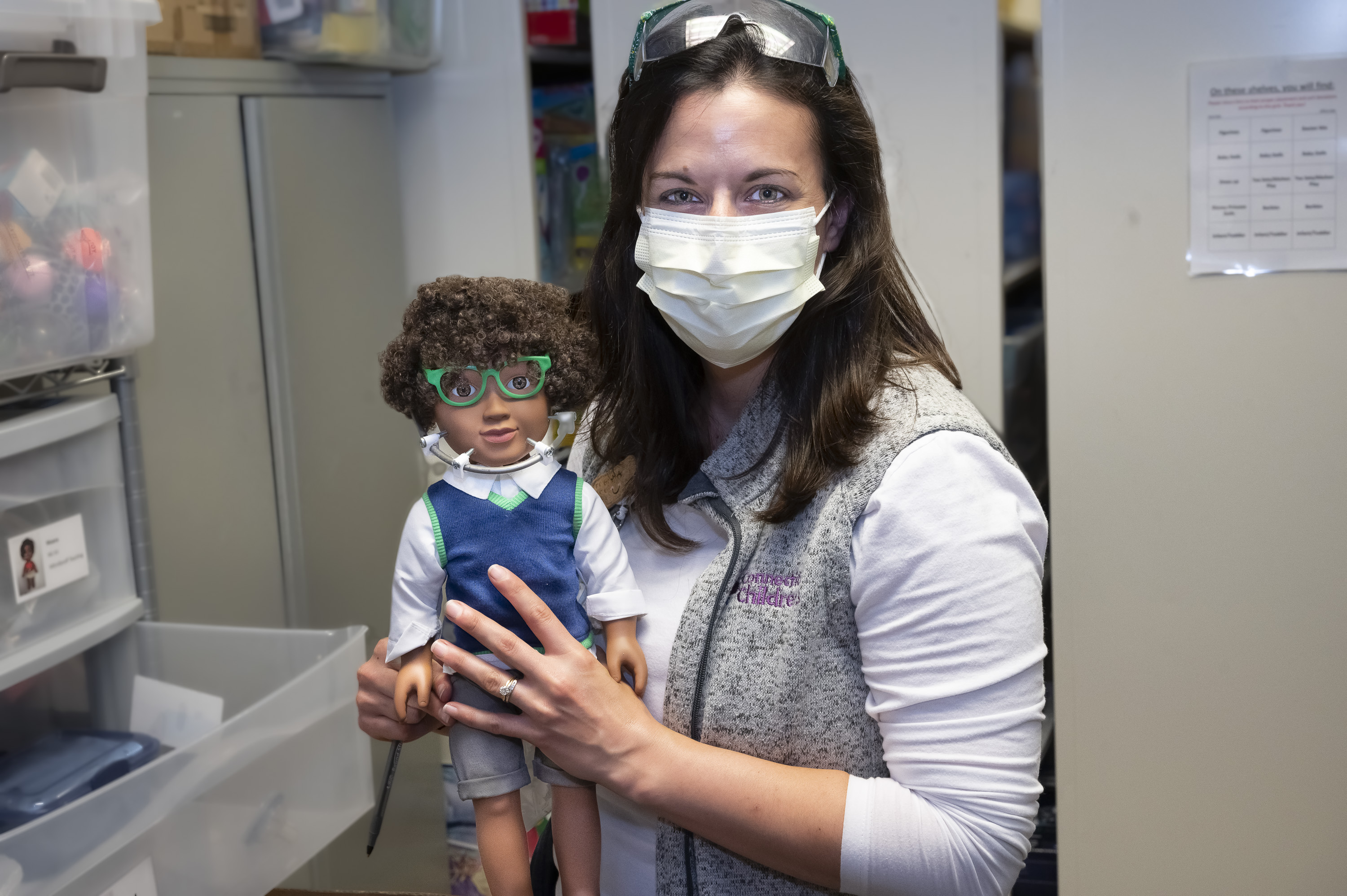
2:00 p.m.
A 22-year-old young man is admitted to the unit. He is blind, deaf and developmentally delayed. He has a textured rubber ball that is his main focus. He handles it constantly. He can’t communicate with Lauren with words, but she sits next to him and very gently touches his arm to let him know she is there. She is paying close attention to his facial expressions and body language, so she can give helpful advice to the nursing staff. When he ignores toys Lauren offers, it’s clear he prefers the tactile qualities of his textured ball. So she heads down to the toy closet, opens a filing cabinet drawer, and pulls out a collection of textured, inflatable balls in different shapes and sizes. She selects three variations on the ball the young man currently has and offers them to him, so he can have some variety in his distraction.
4:00 p.m.
Three-year-old Jeremiah W is in the hospital for asthma. He initially had to have constant aerosolized drugs through a face mask. He is now at the point where the doctors are scaling the treatment back, with the mask on for a few hours and then off for a few. Jeremiah, like any active three-year-old, is not a fan of having this mask on. Now, as his mask-free period comes to an end and it’s time to put it back on, he is very resistant. Lauren tries a variety of techniques to get him to accept the mask. She has a stuffed bear and has him put the mask on the bear, hoping it will convince him to put it on himself. Jeremiah is not having it. Then she has him put the mask on the dinosaur he’s playing with. The tyrannosaurus seems to like the mask, but Jeremiah does not. Finally, she asks the nurse whether the mask actually needs to be on his face, whether he might get enough of the aerosolized medication if the mask were simply close to his face. The nurse consents, so Lauren tapes the mask to the edge of the small table where Jeremiah sits and plays. And that does the trick. He is getting his medication and getting his way. This sort of out-of-the-box thinking is stock in trade for child-life specialists.
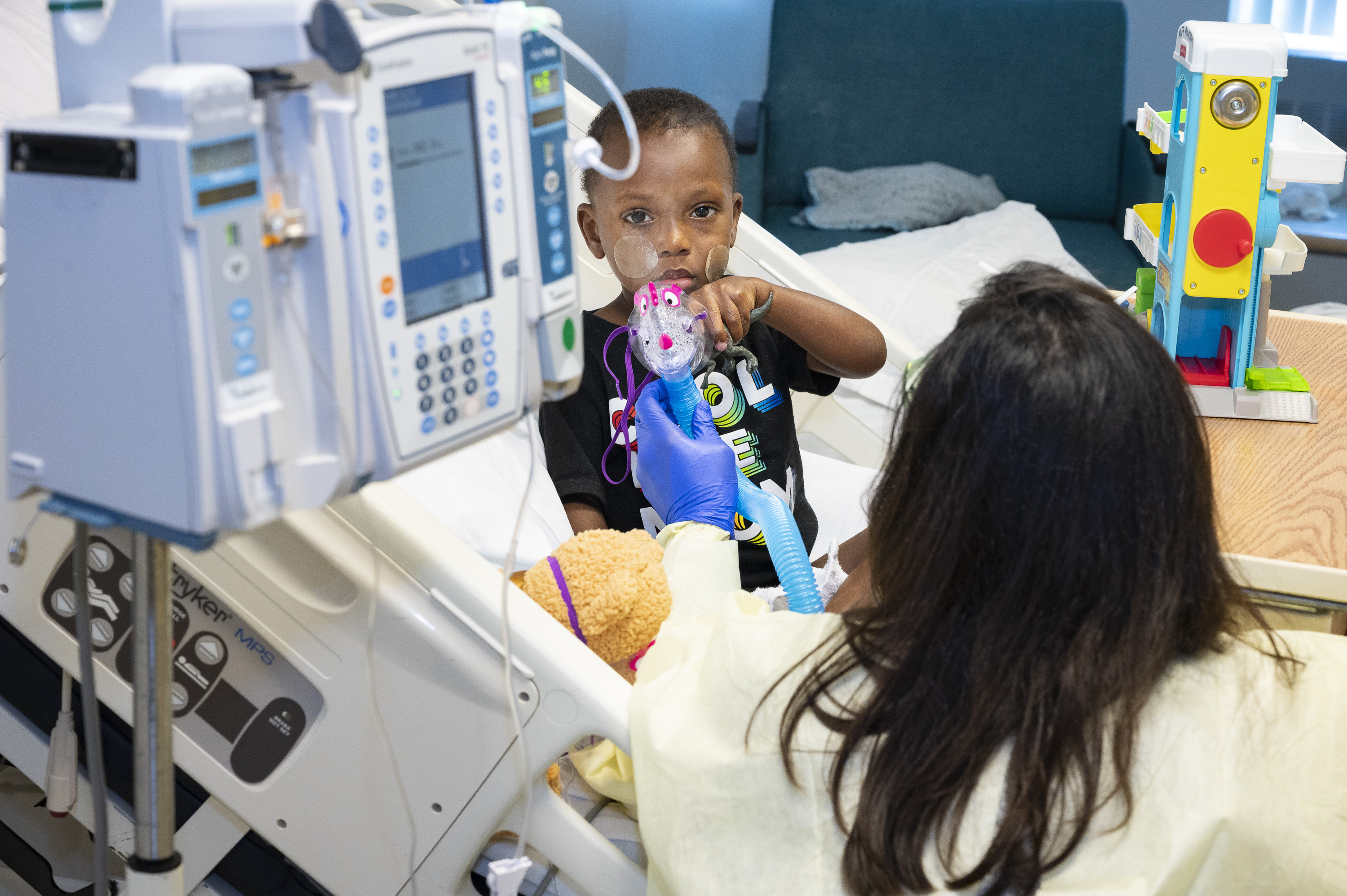
Lauren, JoAnn and Sarah represent part of a much broader child-life team. What a child-life specialist does in the Emergency Department may be very different from what one does in pre-op or on an inpatient floor. But they share innovation and dedication and are an essential part of what makes Connecticut Children’s such a special place. Many of the toys and tools they use are available to them because of donations from you and other donors.
Latest Articles
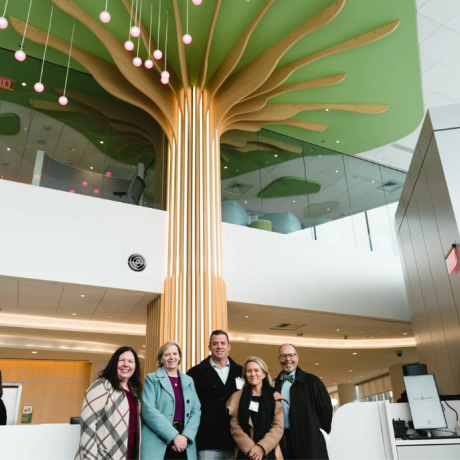
$1 Million Gift from Big Y Supports Connecticut Children's New Clinical Tower and Expanded Pediatric Services

A New Era of Care Begins: Connecticut Children’s Celebrates the Opening of the New Clinical Tower
